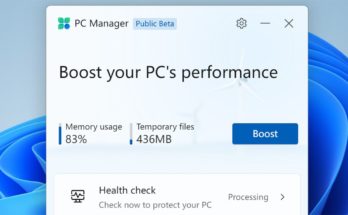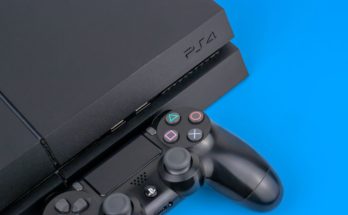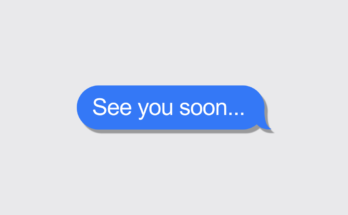
Pode não ser o jogo para criar tumultos que era no lançamento, mas Pokémon Go continua recebendo atualizações substanciais do desenvolvedor Niantic . Mais recentemente, ele introduziu um bônus de captura, que finalmente dá propósito à maioria das medalhas que você vem ganhando.
O sistema de medalhas no Pokémon Go há muito tempo é uma fonte de admiração para muitos treinadores. Para que servem exatamente? Sim, é legal ganhar medalhas (infelizmente não são emblemas , mas não faz sentido em dividir os cabelos), e eles dão a você algo para admirar e acompanhar seu progresso, mas isso é tudo.

A versão mais recente do aplicativo Pokémon Go ( 0.41.2 para Android e 1.11.2 para iOS ) reformulou o sistema de medalhas de forma que eles agora estão divididos em duas seções. A seção de medalhas principais rastreia o que chamaremos de medalhas de mérito. Eles não têm nenhum impacto no jogo, eles existem apenas para seu próprio direito de se gabar. A seção de medalhas inferior, vista aqui dentro de um quadrado vermelho, agora conta para algo novo chamado de “bônus de captura” do seu Pokémon.

Também é mais fácil ver o quão longe você está para a próxima medalha. Por exemplo, para ganhar uma medalha de ouro Youngster, você deve pegar 300 pequenos Rattata. Você pode verificar seu progresso e quantas mais você precisa pegar tocando nos ícones de medalhas na parte inferior de qualquer tela de medalhas.



A metade inferior da tela de medalhas é onde as mudanças importantes ocorreram. Para explicar como eles funcionam, vamos dar uma olhada em uma tela de captura. Aqui, encontramos um Nidoran. Você notará agora que há um pequeno ícone que aparece na parte superior, conforme indicado pela seta.

Nidorans são Pokémon do tipo veneno, que correspondem à medalha Punk Girl. Se abrirmos a tela de medalhas e tocarmos na medalha Punk Girl, veremos que já conquistamos o nível de ouro e isso nos dá um bônus de captura do tipo veneno de +3.

Aqui, apareceu um Magmar. Magmars são Pokémon do tipo fogo. Pokémon do tipo fogo darão a você medalhas de Kindler. No exemplo a seguir, ganhamos apenas uma medalha de nível de bronze, o que nos dá +1 bônus de captura tipo fogo.


Finalmente, às vezes, certos Pokémon de tipo duplo podem ter medalhas sobrepostas. Pidgeys, por exemplo, ganham não apenas a medalha Schoolkid para Pokémons do tipo normal, mas também medalhas do Guardião de Pássaros, para Pokémon do tipo voador. No entanto, você ganhará apenas a média para Pokémon de tipo duplo, portanto, embora os bônus de captura totalizem +6, só é possível ganhar +3.


Então, o que todos esses bônus de captura fazem? Primeiro, eles não dão a você mais pontos quando você pega algo. Você não ganhará 103 XP contra 100 XP. Em vez disso, o bônus de captura deve tornar a captura de Pokémon mais fácil.
It’s unclear exactly how the new catch bonus works, but most Pokémon Go users speculate that it is a percentage. This makes sense, since it meshes well with Pokémon base capture rate, and also works with all the other multipliers in the game, such as the different types of Pokéballs (normal, great, ultra), throw types (nice, great, excellent, curveballs), razz berries, and so forth.
To understand this, we first have to explain the theory behind how catch rates in Pokémon Go work. Remember, this is theoretical, the exact numbers may not line up and don’t really matter, but it does clarify the game’s catch mechanics and how the new catch bonus works.
When you happen upon various Pokémon species, they all have a specific base capture rate. Pidgey, Caterpie, Weedle, Rattata, and other common Pokémon are said to have a base capture rate of 40%; Charmander, Pikachu, Bulbasaur, and Squirtle supposedly have about a 16% base capture rate; rare and evolved Pokémon have lower base capture rates, and so forth.
The base capture rate differs from the capture chance, which is based on trainer level. As a trainer levels up, the capture chance decreases. So, if you encounter a Magikarp, which has a base capture rate of 56%, as a level 1 trainer, you have a chance of capturing that Magikarp 100% of the time. As a level 25 trainer, your capture chance decreases to 42%.
(Yes, this may seem counter-intuitive but as you level up, Pokémon tend to appear with higher combat power (CP), making them harder to catch. This means you will more often need to resort to items like great balls, ultra balls, razz berries, and other multipliers, to increase your capture chance.)
This capture chance exists before you throw the ball, which is where the multipliers come into play, and obviously lends credence to the importance of catching as many Pokémon as you can because a level 1 trainer is obviously not going to have a +3 gold medal for any Pokémon type.
RELATED: How to Use Pokémon Go’s New Buddy System
So, theoretically a Pidgey, with a 40% capture chance, and with a +3 multiplier, could mean you now have a 43% chances of catching it. If you add in other factors such as throw type, Poké ball type, and razz berry multipliers, your capture chance increases considerably.
To better illustrate these multipliers, here is a hypothetical math breakdown a commenter did on Reddit to give you a better idea of how this might shake out with the new catch bonus system:
Base catch chance: 10%
Bonus for gold medal: +3% to base catch chance
Multiplier for “great” throw: 1.5x
Multiplier for curveball: 1.25x
Multiplier for razz berry: 1.25x
Multiplier for ultra ball: 1.5x
Overall catch chance without bonus: (10%) * 1.5 * 1.25 * 1.25 * 1.5 = 35.2%
Overall catch chance with bonus: (10% + 3%) * 1.5 * 1.25 * 1.25 * 1.5 = 45.7%
Unfortunately, we don’t have an official Niantic mathematical formula to give you an idea about how this all breaks out. Though we can tell you that empirically, the new catch bonus system makes it easier to capture common Pokémon (Pidgey, Rattata, Magikarp), and overall we’ve noticed we use fewer resources to catch all Pokémon types.
There’s clearly an incentive now to catch more Pokémon because the more you catch, the easier it is. The new catch system isn’t as simple as the previously-added buddy system, but in many ways it adds considerably more value for serious trainers who are still dedicated to grinding it out and leveling up.


